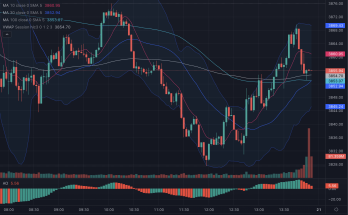Leveraged ETFs are investment vehicles that allow investors to amplify the returns of a particular index or benchmark. These funds are designed to provide 2x or 3x the daily return of the underlying benchmark. For example, if the S&P 500 rises 2% on a given day, a 2x leveraged ETF would rise 4%. Leveraged ETFs can be used to build powerful long or short positions, and they can also be used to hedge existing positions. They’re a popular tool for day traders, as they can be used to take advantage of intraday price movements.
However, leveraged ETFs are not without risk. Because these funds use leverage, they’re more volatile than traditional ETFs. In addition, because they rebalance their holdings on a daily basis, they can experience large losses in market downturns.
Utilizing leveraged ETFs as part of an investment or trading strategy can boost returns if the market performs well, but it also carries risks. Before you invest in a leveraged ETF, make sure you understand these risks and potential rewards.
Let’s take a look at some of the uses cases, types of leveraged ETFs, and their inherent risks in more detail.
How do you use leveraged ETFs and when?
Leveraged ETFs are often used by traders who want to take on more risk to earn higher returns. However, these funds can also be risky for investors who are not familiar with them. It is important to understand how these funds work and how they can impact your portfolio before using them.
Leveraged ETFs can be used in several different ways, depending on your investment goals. For example, a leveraged ETF can be used by a trader who believes the market will fall and wants to make money when stock prices decline, thus shorting an index fund. The investor would then purchase a leveraged ETF that was designed to perform well when stock prices declined.
While these funds can be used for a few investment strategies, they’re often employed by traders who believe that a particular index or security is going to experience a large price move in either direction. Leveraged ETFs can be used as part of a long-term buy and hold strategy, but they are more commonly used by short-term traders who want to capitalize on volatility and price movements.
What are the risks of leveraged ETFs?
As previously mentioned, leveraged ETFs are investment vehicles that use financial derivatives and debt to amplify the returns of an underlying index. Sounds risky, right? And it is.
The SEC (Securities and Exchange Commission) has issued a warning about the risks associated with leveraged ETFs, saying investors “may not fully appreciate the particular characteristics or risks of such investments”. For example, a 2x leveraged ETF may seem like a great way to double your money, but if the market moves against you, you could lose everything you’ve invested.
Another risk is that the derivatives used by leveraged ETFs can be extremely volatile and lead to large losses in short periods of time, even in a bull market. This can happen because the derivatives and debt used to amplify returns can also work in reverse, amplifying losses as well. In fact, some leveraged ETFs have lost more than 90% of their value in just one day. So, before you invest in a leveraged ETF, make sure you understand all the risks involved.
What are the different types of leveraged ETFs?
There are three types of leveraged ETFs: inverse, daily rebalanced, and multi-day rebalanced. Inverse leveraged ETFs are designed to deliver the opposite return of the underlying index or benchmark. Daily rebalanced leveraged ETFs are designed to reset their exposure on a daily basis. Multi-day rebalanced leveraged ETFs are designed to reset their exposure at least once every week.
With a daily resetting leveraged ETF, the holdings and returns are reset every day. This allows the ETF to maintain its 2x or 3x leverage no matter what the market does on a day-by-day basis. However, it also means that if the market moves against the ETF over several days, losses can add up quickly. Monthly resetting leveraged ETFs work in a comparable way, but the holdings and returns are only reset once per month. This can lead to more stable returns, but it also means that if the market moves against the ETF over several months, losses can be significant.
Examples of popular leveraged ETFs
According to ETF.com, leveraged ETFs have total assets under management of $25.16B. Some of the more popular leveraged ETFs include:
- TQQQ, ProShares UltraPro QQQ, 3x daily long leverage to the NASDAQ-100 Index
- QID, ProShares UltraShort QQQ, 2x daily short leverage to the NASDAQ-100 Index
- DXD, ProShares UltraShort Dow30, 2x daily short leverage to the broad-based Dow Jones Industrial Average Index
- SDS, ProShares UltraShort S&P500, 2x daily short leverage to the S&P 500 Index
- SSO, ProShares Ultra S&P 500, 2x daily long leverage to the S&P 500 Index
- BOIL, ProShares Ultra Bloomberg Natural Gas, 2x daily leveraged exposure to natural gas
- NUGT, Direxion Daily Gold Miners Index Bull 2X Shares, 2x daily long leverage to the NYSE Arca Gold Miners Index
- SOXL, Direxion Daily Semiconductor Bull 3x Shares, 3x daily long leverage to the PHLX Semiconductor Index
- SDOW, ProShares UltraPro Short Dow30, 3x daily short leverage to the Dow Jones Industrial Average
- FAS, Direxion Daily Financial Bull 3X Shares, 3x daily long leverage to the Russell 1000 Financial Services Index
- DFEN, Direxion Daily Aerospace & Defense Bull 3X Shares, 3x daily performance of the Dow Jones U.S. Select Aerospace & Defense Index
- NAIL, Direxion Daily Homebuilders & Supplies Bull 3X Shares, 3x daily performance of the Dow Jones U.S. Select Home Construction Index
As you can see from the above list, there’s leveraged ETFs for a variety of scenarios. For a full list of leveraged ETFs, check out the ETF Database.
The bottom line: should you use leveraged ETFs and if so, which ones?
The use of leveraged ETFs can be complex and risky, so it is important for investors to understand how these funds work before using them. In general, leveraged ETFs should only be used by investors who have a high tolerance for risk and who understand the potential for losses as well as gains. Quite a few leveraged ETFs are available on the market, and it is important to ensure that the one you choose has a high enough yield to justify the potential of losses.
With numerous leveraged ETFs available on the market, investors should carefully consider the underlying indexes and benchmarks that each fund is targeting. To trade a leveraged ETF, investors may also need a margin account with the broker or financial institution facilitating the trade.
Leveraged ETFs are a type of exchange-traded fund that use financial derivatives and debt to amplify the returns of an underlying index. There is a lot of debate surrounding these products, as some believe they are simply too risky for most investors. Others think that leveraged ETFs can be a powerful tool for boosting portfolio performance if they’re used correctly.
The bottom line is that leveraged ETFs can be a useful tool, but they should not be used indiscriminately. It is important to understand how these products work and to use them only in situations where they can add value to your portfolio.
WealthLed, Copyright 2020 - 2022, All Rights Reserved. WealthLed does not offer any personal financial advice or recommend the purchase or sale of any security or investment for any specific individual. Nothing in this article should be considered personalized investment advice and is for educational purposes only. Additionally, WealthLed has advertising relationships with some of the offers listed on this website. We may receive compensation when you click on links to those products or services.

